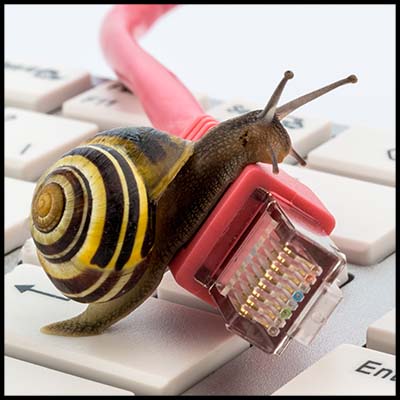Your network can work just fine a lot of the time but sometimes there are limits to the amount of data it’s able to process. The difficulty here is that identifying the cause of the slowdown isn’t always easy. However, there is one issue that’s a common cause of this problem – a bottleneck. The question is: how can substandard network performance be resolved?
Think of how a bottle is designed. It works perfectly for the purpose, with the narrow neck limiting how much liquid comes out when you pour. It means you won’t drench yourself or splash liquid everywhere. A similar example is a dual-lane highway at peak time. Lots of cars are all travelling to the same destination and both lanes need to be clear, with traffic flowing smoothly, for the system to work. But what happens if one lane is obstructed? You’ll probably know from personal experience that this can cause huge slowdowns and tailbacks, with traffic crawling along (and a lot of frustrated drivers checking their watches and cursing).
When it comes to network performance, the principle is the same. The design of the network constrains or enables the flow of data. Specifically, the bandwidth and capacity of the hardware are key factors determining data flow. If too much data is trying to move through the system at the same time, a bottleneck is the result. So what causes network bottlenecks?
It’s usually the hardware that’s the cause of a network problem. Typically, the principal culprits are the CPU (the central processing unit that manages the instructions received), graphical processing units and issues relating to insufficient RAM (random access memory).
Network bottlenecks not only have an impact on the efficiency of a network but also on the productivity of the people using it. If it doesn’t have the resources it needs to convey data then your network can become so sluggish that it affects the normal functioning of your business. The things that normally take a short time to accomplish become more like a marathon. Your staff can waste a lot of time waiting, while work piles up, and they have to rush through other tasks to complete them on time and within budget. In a worst-case scenario, some tasks can be put to the side completely, while employees tackle things that actually can be done without delays and frustration. As a business owner you’ll know that this can have negative consequences for your operations.
Getting to the bottom of a bottleneck isn’t easy and often people just struggle along, since there’s nothing clearly wrong and no obvious solution. The good news is that help is available. With support from IT professionals who know how to locate bottlenecks and deal with them, you can take steps to address network problems and restore your system to full functionality.
Are you experiencing problems with your network performance, which in turn lead to impaired productivity? The expert IT professionals at Quikteks can assist in identifying a variety of network problems, including bottlenecks and hardware problems. If you’d like to find out more about our network audit services, give us a call today at (973) 882-4644.

